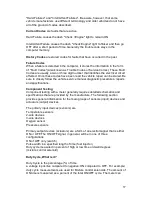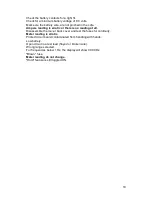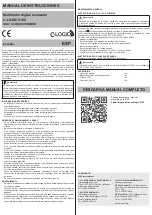
12
.Disable the ignition so the engine doesn't start; crank the engine for 2-3
seconds.
A voltage drop of more than 0.8 volts would indicate a poor ground circuit.
Clean and inspect the battery and starter cables, solenoid and cable
connections; test again.
Note: A defective starter solenoid may cause an excessive voltage drop; check
the cables and connections before replacing the solenoid.
Important: Repeat this test when the engine is thoroughly warmed up. Heat
expansion of metal may cause resistance to increase.
Charging System Tests
[1]Battery (+)
This test checks tor alternator output voltage at the battery.
.Set the rotary switch to voltage.
.Connect the positive (+) lead to the positive (+) battery terminal.
.Connect the negative (-) lead to the positive (+) battery terminal.
.Set the MiniMax teature on the meter.
.Mark sure all vehicle accessories are turned OFF.
.Start the engine and hold at 1500 RPM.
A reading ot 13.1 -15.5 volts is an acceptable charging rate. It the voltage is low
check tor:
.Loose, cracked, or glazed drive belt.
.Loose or tau!ty wires or connectors.
.Defective alternator or regulator. See
[2] Alternator Voltage Output (+),
Loaded.
[2]Alternator Voltage Output (+), loaded
This test checks for alternator output voltage. This test is necessary only if
the vehicle failed
[1] Battery (+) test.
.Set the rotary switch to the Voltage setting.
.Connect the positive ( + ) lead to the battery (B+ ) output post on the back ot
the alternator.





































